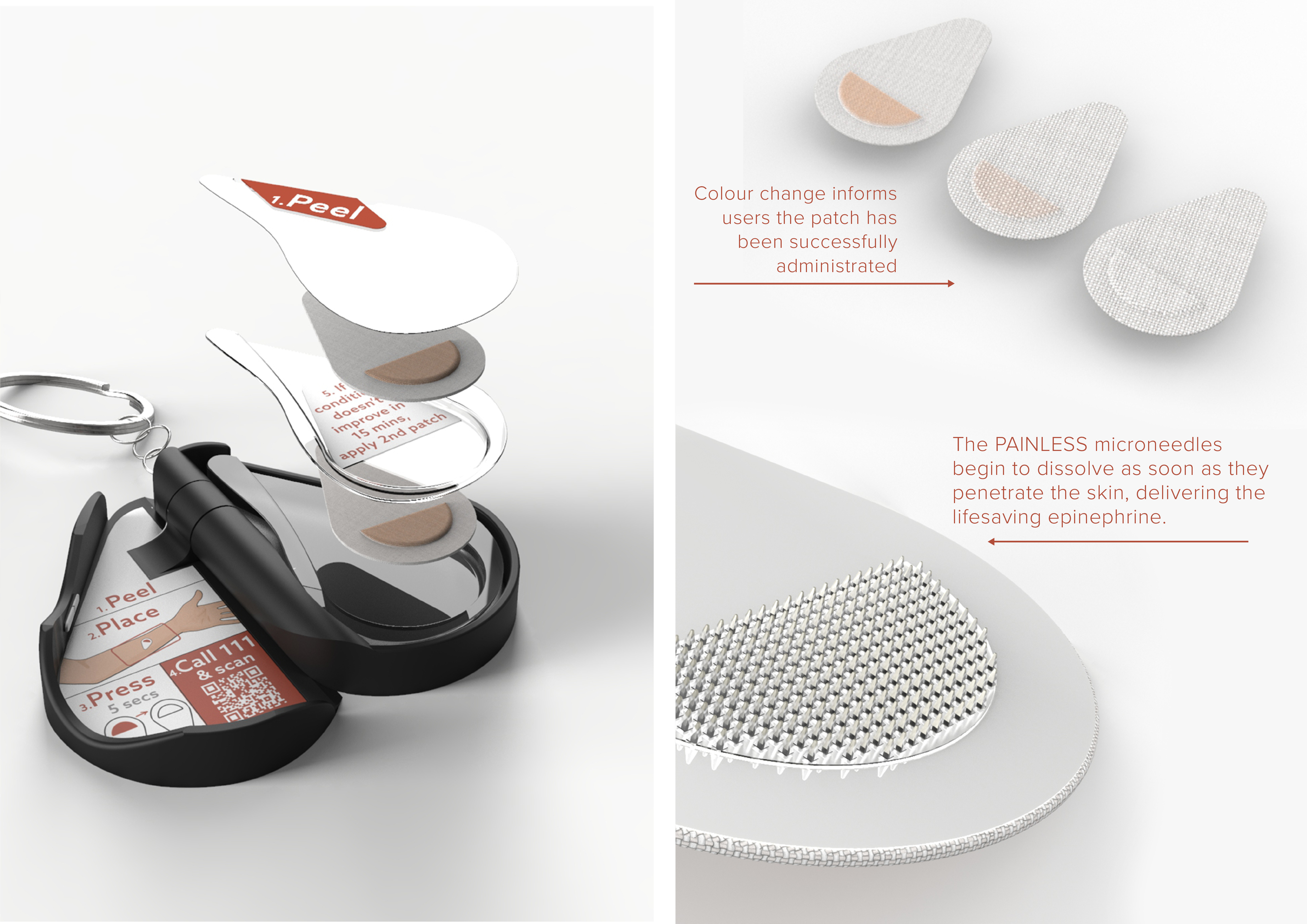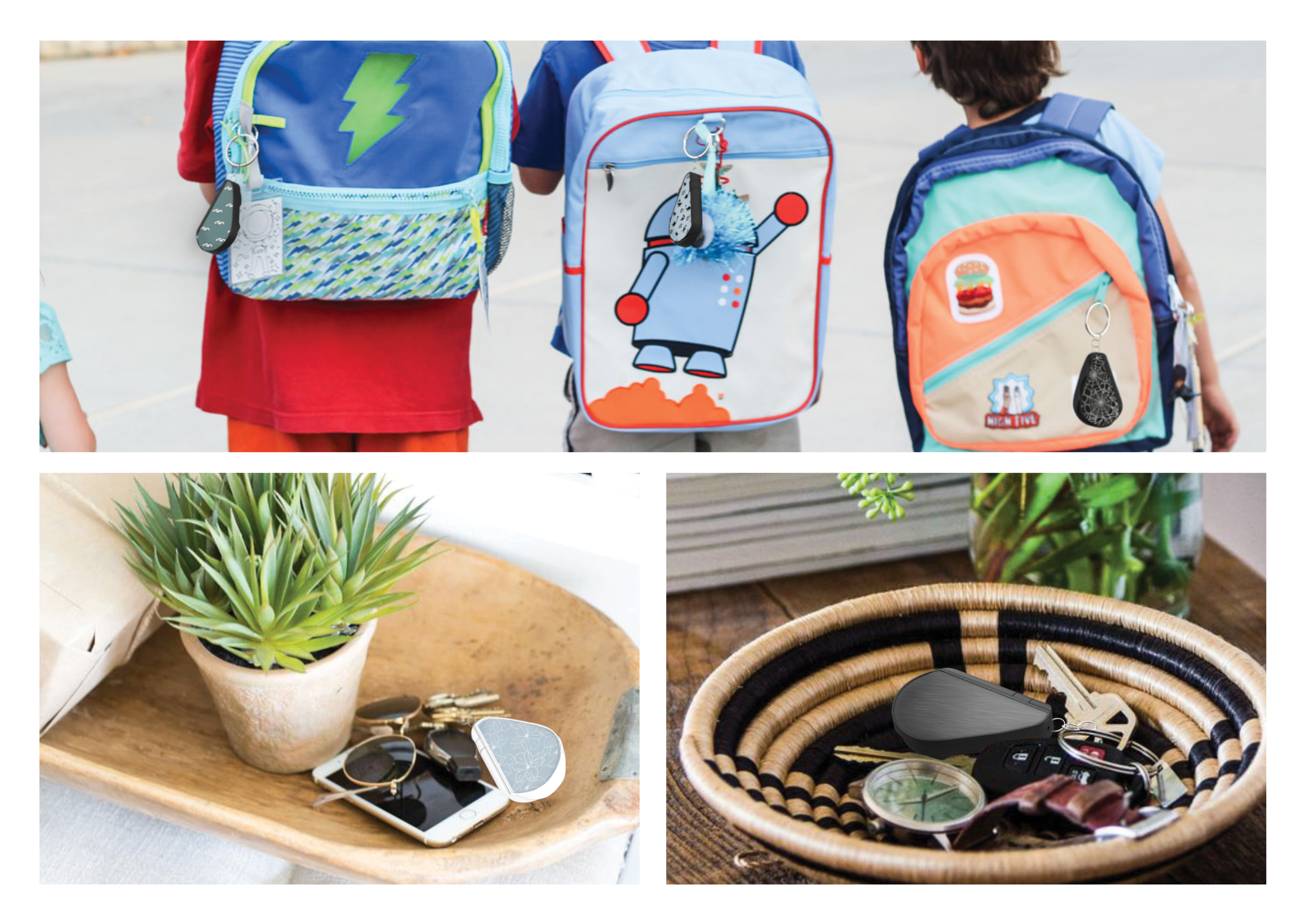
Courteney Eccles
Epipatch

The next generation in Anaphylaxis management
Everyday Individuals who have anaphylaxis are at risk of experiencing a severe, life threatening reaction. Epipatch pushes the possibilities of medicine and rethinks how we approach anaphylaxis management. It prioritizes the patient and user that may be assisting in administration, to make the process as initiative as possible, minimizing the doubt, anxiety and panic experienced in these emergency situations.
The Epiptach is simply applied to the inside of the arm like a plaster, pressed for 5 seconds until the colour disappears and left on the arm to work its magic. No aggressive swing and jab motion required. The convenient carry case minimises that chance of leaving the Epipatch at home while maximising the portability of this potentially lifesaving treatment.
My project explored anaphylaxis management with a focus upon improving the overall user experience of carrying and administering epinephrine. Everyday Individuals who have anaphylaxis are at risk of experiencing a severe, life threatening reaction. No matter the precautions they take to avoid their allergen nothing can truly prevent a reaction. The recommended action is to carry their prescribed epinephrine auto injector, ideally two, on them always.
With the current products comes a plethora of issues including procedural errors and emotional implications associated with using or requiring them. Bulky and hard to transport, fear of inflicting more pain, miss use, broken metaphors, negative and aggressive connotations.
The Epipatch aims to reduce the stigma attached to carrying the large ‘weapon-like’ device and empower and encourage them to confidently carry their Epipatch on an everyday basis. I also placed a large focus upon the emotional implications of the emergency situations that epinephrine is required in. In these situations, there is a heightened sense of stress, doubt, panic and uncertainty, Epipatch has been designed to eliminate that and leave users feeling calm and confident in administration.
The Epipatch features dozens of water-soluble microneedles which begin to dissolve into the bloodstream once applied, releasing the lifesaving epinephrine. If a patient is experiencing a reaction, they, or someone assisting them, apply the patch to the inside of the forearm like a plaster. The system is designed to have a smooth transition from removing the patch, to placing it on the arm without readjusting the grip or fumbling with the patch. The user then presses the patch for 5 seconds. Pressing ensures the painless needles have full contact with the skin and result in the patch losing its colour, signifying and reassuring users that they have correctly administered the patch.
The carry case integrates the Epipatch seamlessly into the user’s lifestyle. The case is to be attached to keys, purse or a school bag, simplifying transportation and reducing the chances of forgetting the Epipatch at home. The case is sleek and discreet but still identifiable if the patients need assistance during a reaction. Users are also able to personalise their case by added skins to make their case unique to them.
Once the Epipatch has been used or reaches its expiry date the users simply remove the case inserts and replace with their prescribed refill, minimising the waste associated with current solutions. As a result of the Epipatch not containing a hypodermic needle, specialist sharps disposal is not required.
The supplementary webpage, which users will be directed to when they scan the QR code inside of the patient’s case, will provide support to those who are unfamiliar with the Epipatch or Anaphylaxis. Often patients need assistance when administering their epinephrine, the webpage guides users through the application process, providing reassurance along the way.


